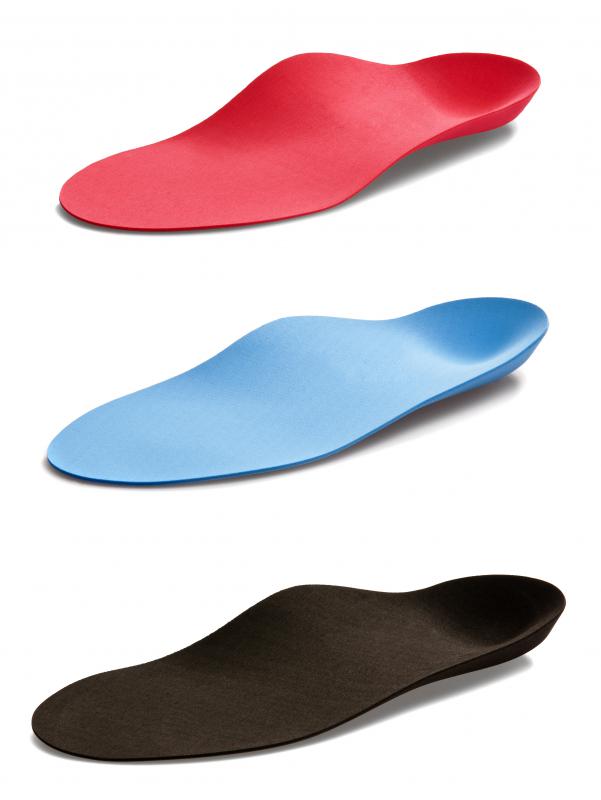At WiseGEEK, we're committed to delivering accurate, trustworthy information. Our expert-authored content is rigorously fact-checked and sourced from credible authorities. Discover how we uphold the highest standards in providing you with reliable knowledge.
What are Custom Made Orthotics?
Custom made orthotics are specially-designed shoe inserts and insoles that provide pain relief and comfort. Individuals who spend a lot of time on their feet, athletes, runners, and people with various types of injuries and health conditions can all benefit from custom made orthotics. Inserts may be constructed out of hard plastic to improve foot functioning or a soft gel, foam, or other material to provide comfort. Trained physicians, podiatrists, and orthotists can help individuals decide on the proper type of orthotics for their specific conditions.
When an individual's doctor or podiatrist recommends orthotics to improve functioning, support, or comfort, he or she is typically referred to an orthotist who can custom fit inserts. The orthotist usually takes careful measurements and creates plaster molds of a person's feet. The specialist uses the molds to form orthotics that match the shape of the patient's feet. In some cases, individuals must purchase special shoes which enhance the support provided by custom made orthotics.

There are two basic types of custom made orthotics: hard, rigid models for stability and soft models for comfort and shock absorption. Rigid orthotics are commonly made out of polyurethane or another hard plastic, and are designed to add support to the feet, legs, and lower back. People with flat feet, bad ankles, arthritis, or lower back pain use rigid orthotics to correct foot problems and provide stability when walking or standing for long periods of time.

Soft orthotics can be formed from foam, gel, cloth, and other soft, flexible materials. They are designed to ease foot pain and absorb shock while walking, running, and jumping. People with sores, warts, corns, bunions, and other maladies on their feet usually benefit from soft custom made orthotics, as the material reduces friction between their shoes and their feet. Athletes use soft orthotics to minimize the tension put on their feet from constant running, jumping, and stopping.

An individual with very minor foot soreness or an athlete looking to improve performance does not usually need to be fitted for custom made orthotics. Rather, many pharmacies, sports stores, supermarkets, and shoe retailers sell commercial orthotics that come in standard shapes and sizes. Commercial orthotics are not specially tailored to a person's feet, though they are usually effective at providing extra cushioning and support. Anyone who believes he or she may benefit from commercial or custom made orthotics can ask their physicians or podiatrists to help them determine the best options.
AS FEATURED ON:
AS FEATURED ON:













Discussion Comments
Ironically, they seem to be coming out with quite a lot of research now that shows that a high percentage of foot problems come from wearing shoes in the first place.
I know things like bunions definitely come from ill fitting shoes.
So, then you have to buy more shoes to correct the problem. It seems like an ideal solution for foot and ankle clinics to me.
Of course, it would be almost impossible to go without shoes in a modern world. It's just to unclean and you can actually catch parasites through the soles of your feet.
But, I'm glad they are starting to try and get shoes to mimic the conditions of bare feet so that we don't all end up having to wear orthotic shoes.
I have a cousin who has one leg significantly shorter than the other. He adjusted as a teenager by using his tiptoes on one leg, but it started leading to problems in that knee I think.
So, he got some custom made shoes to help correct the problem, once he had a decent job and could afford them. I'm not sure if he had orthotic shoe inserts though.
He actually pretty much had to learn how to walk again with his new shoes.
It was really hard for him for a while because the new pace kind of hurt his legs and made him tired, but now that he's got used to it, it was definitely the right thing to do and his legs are much better.
I'm just glad he was able to afford the proper shoes to help correct his problem.
to the point info. helpful.
Post your comments